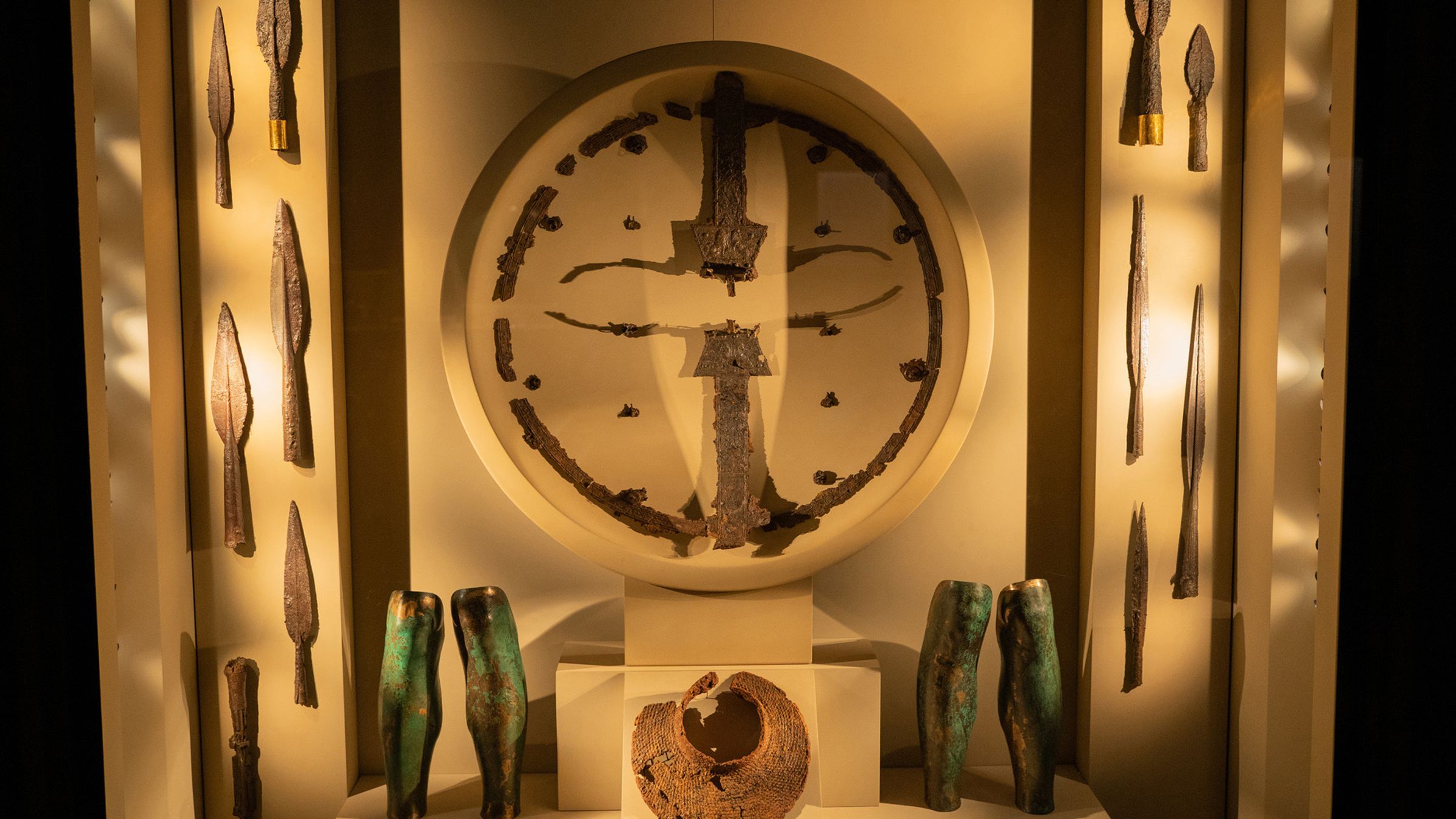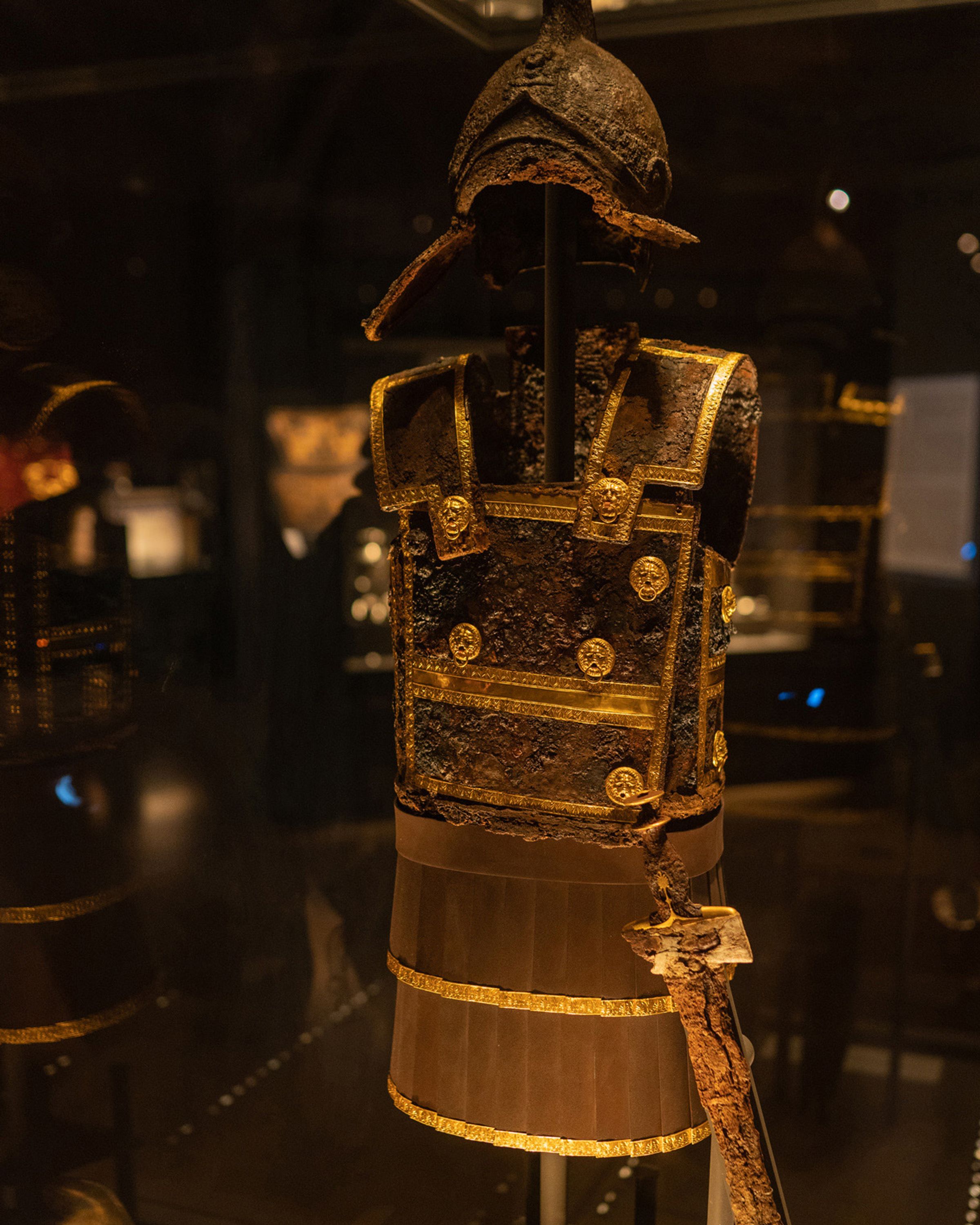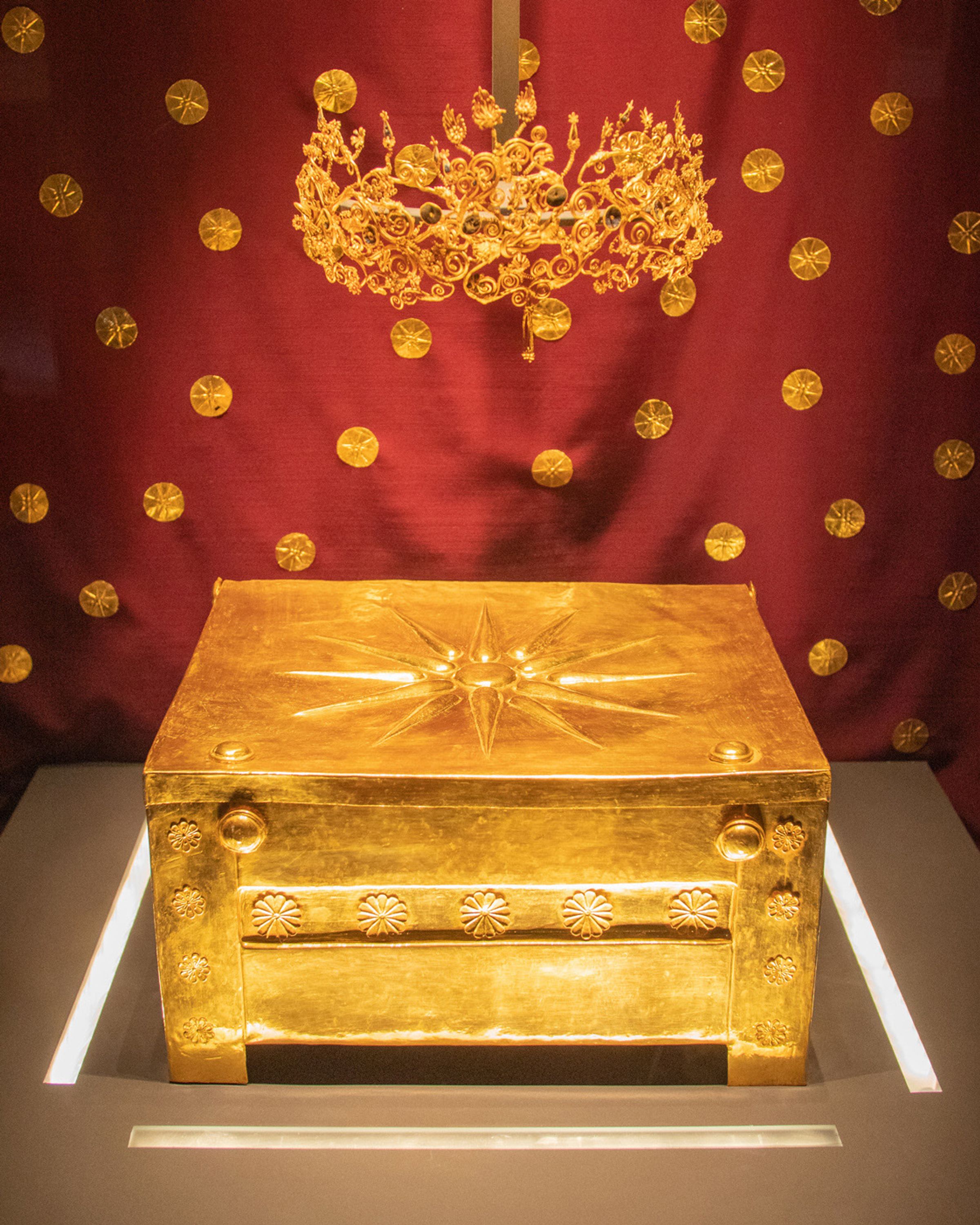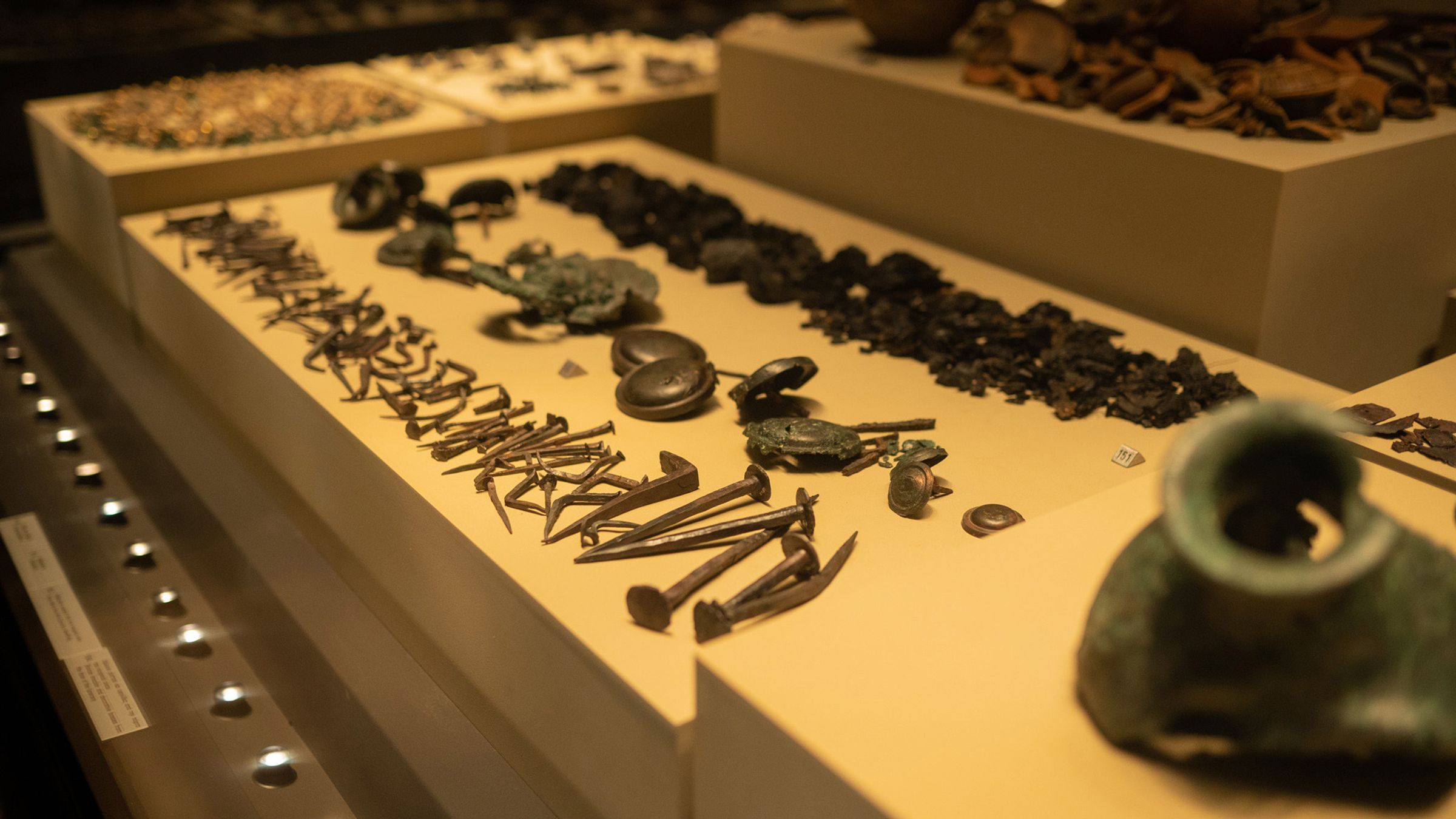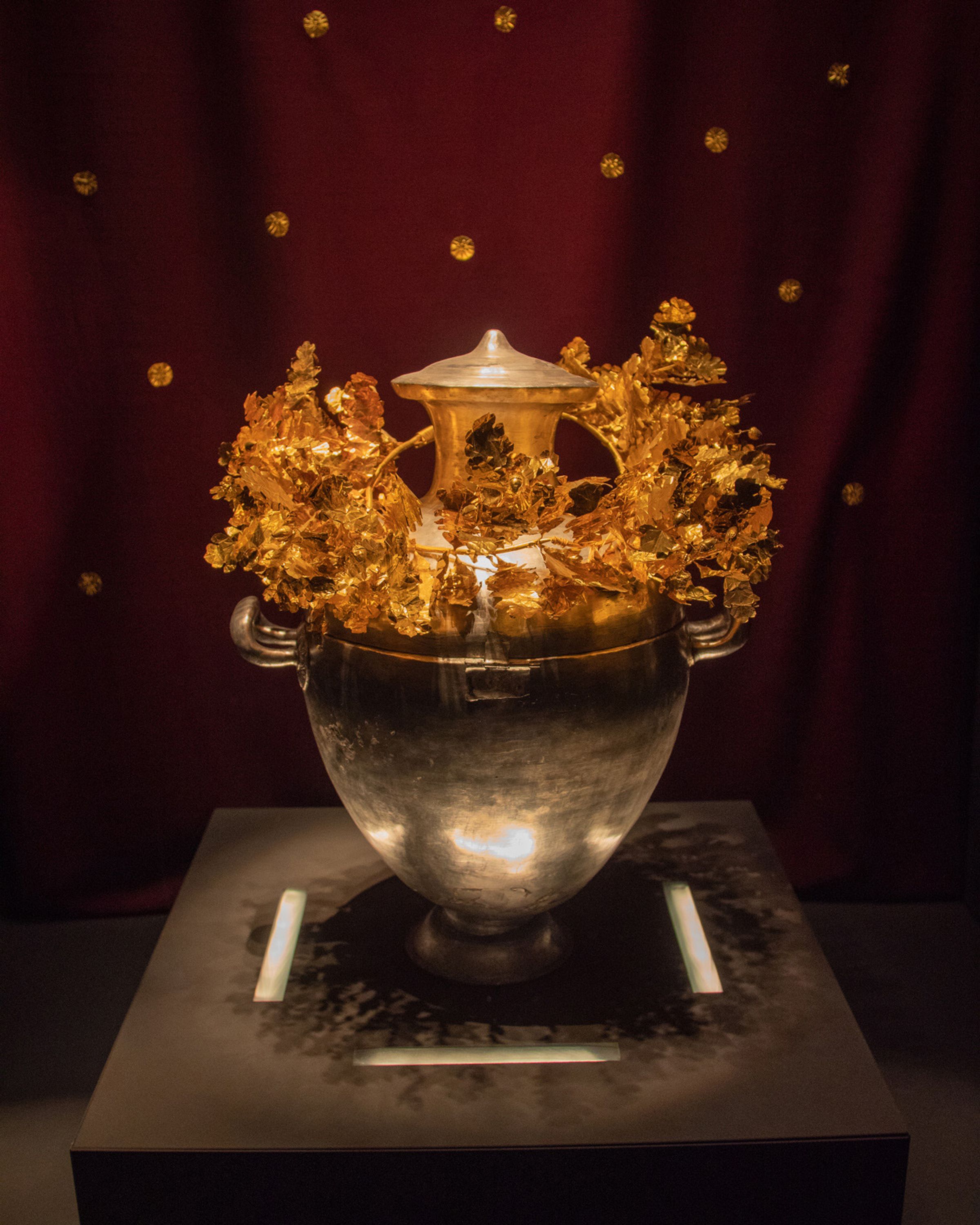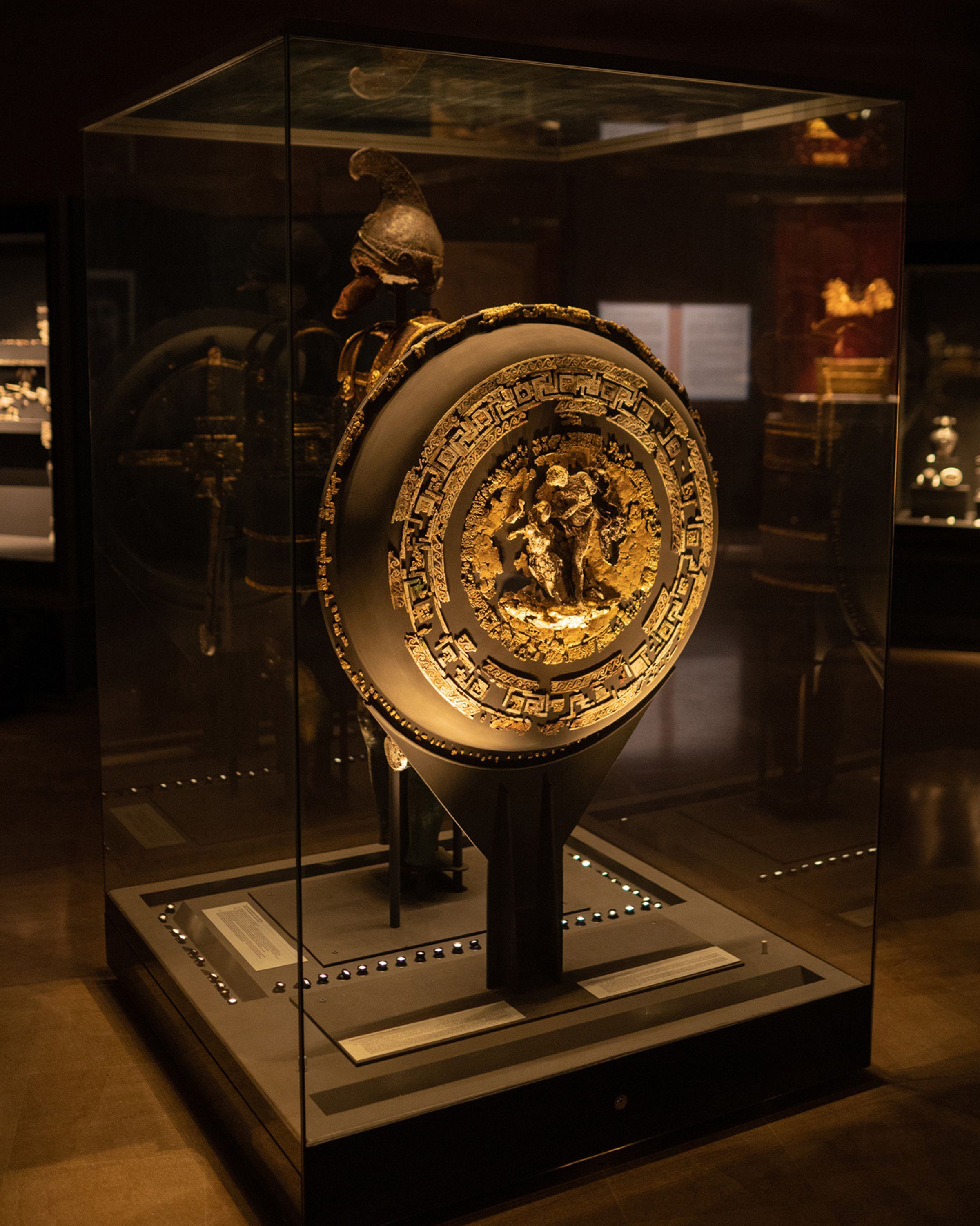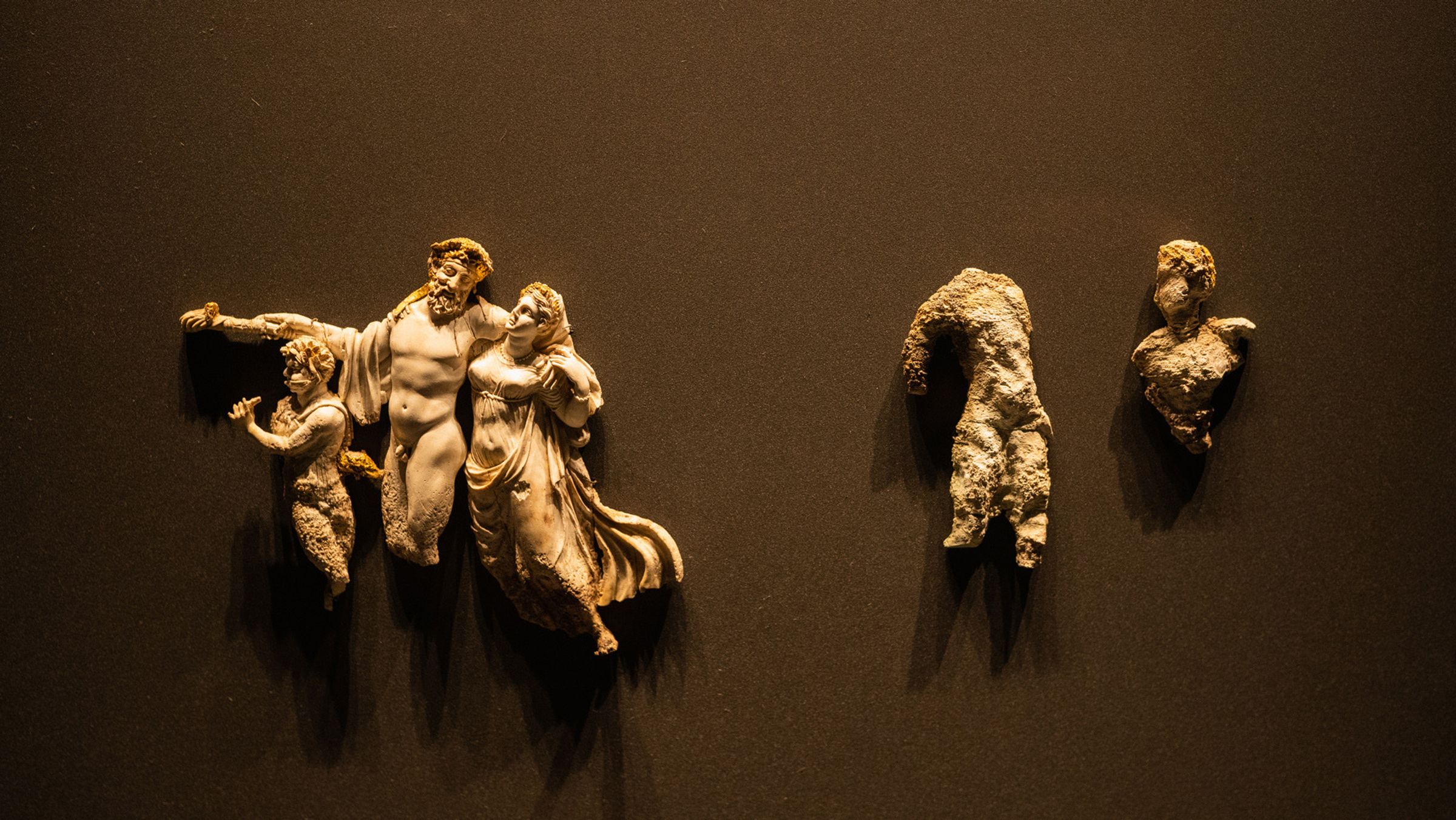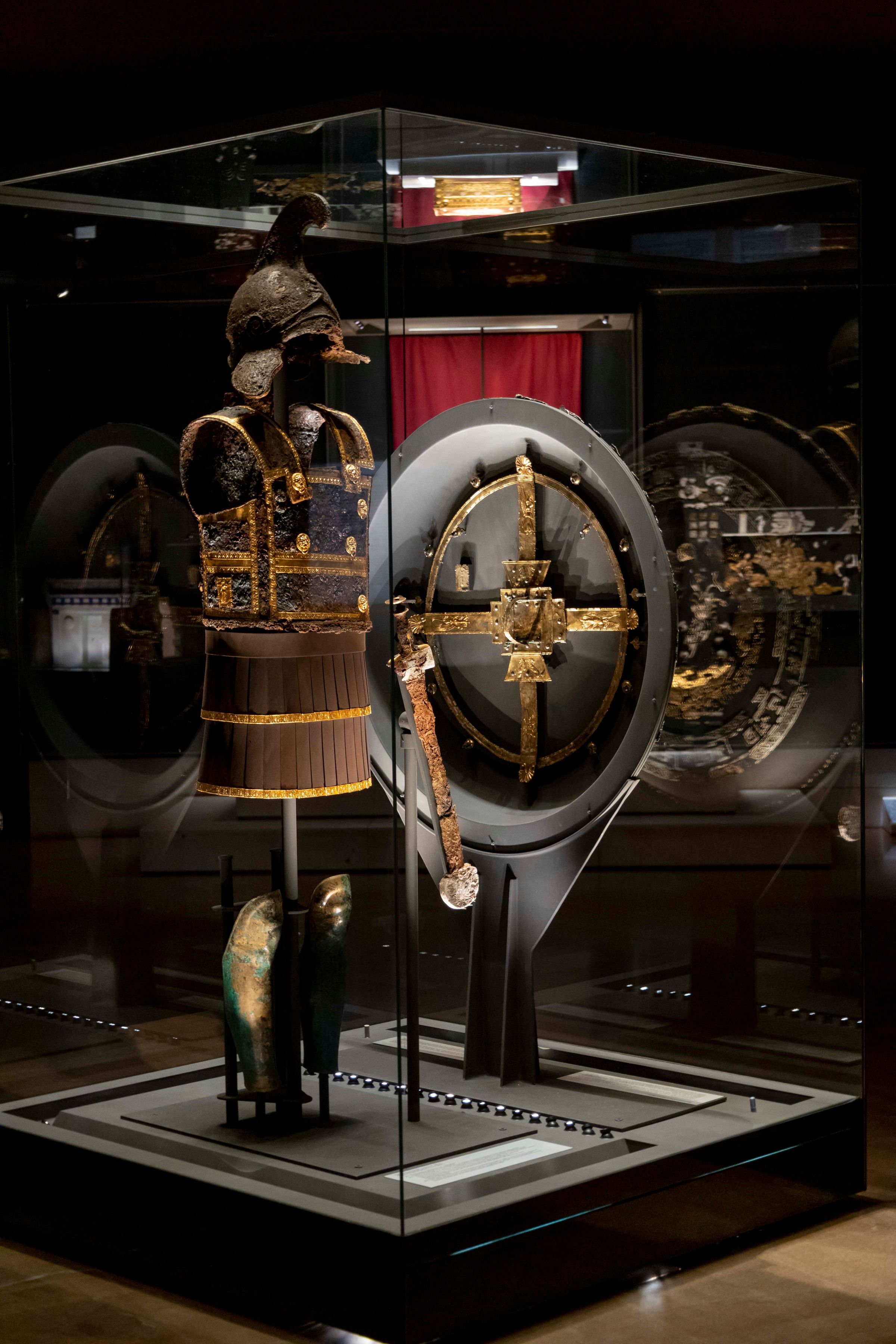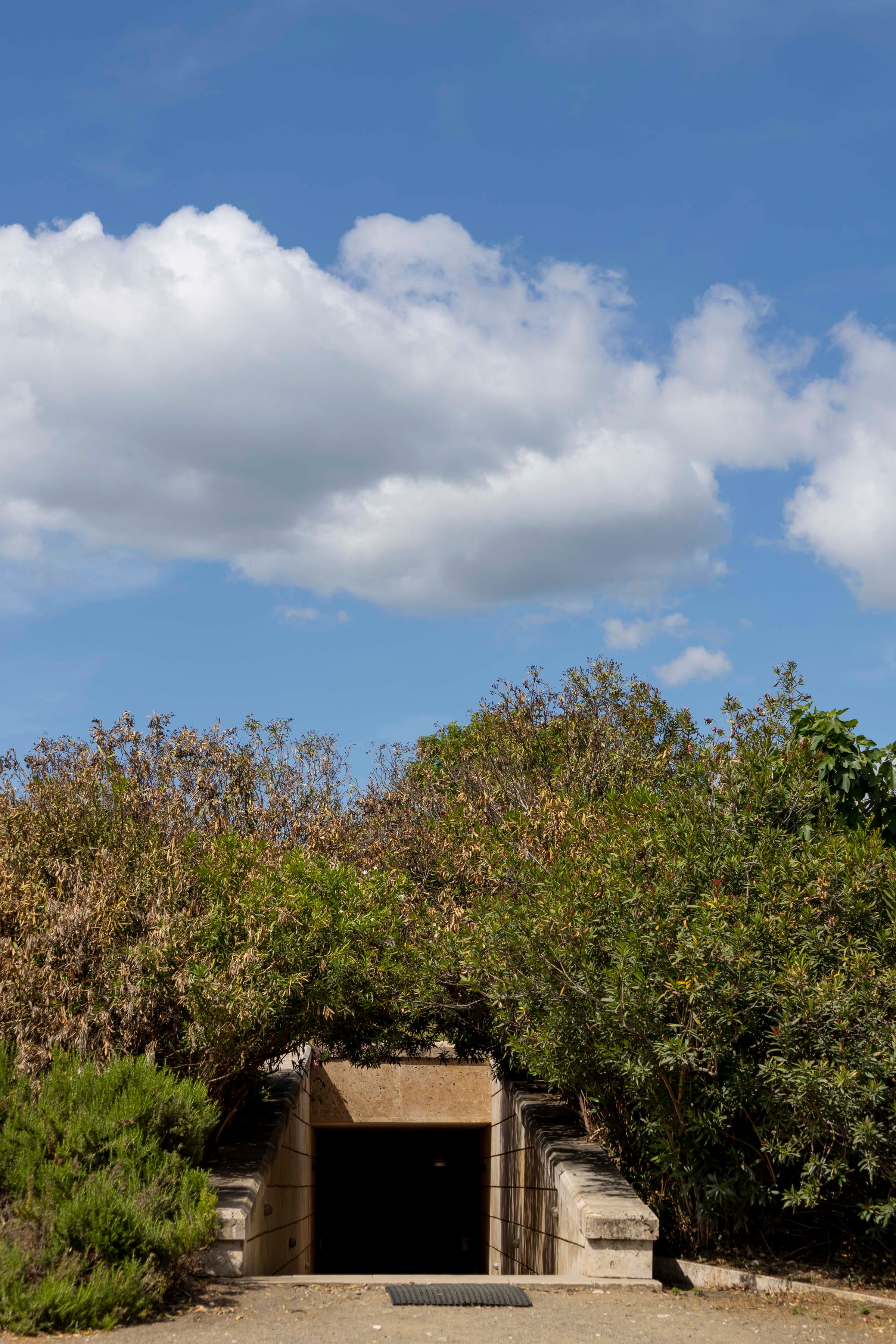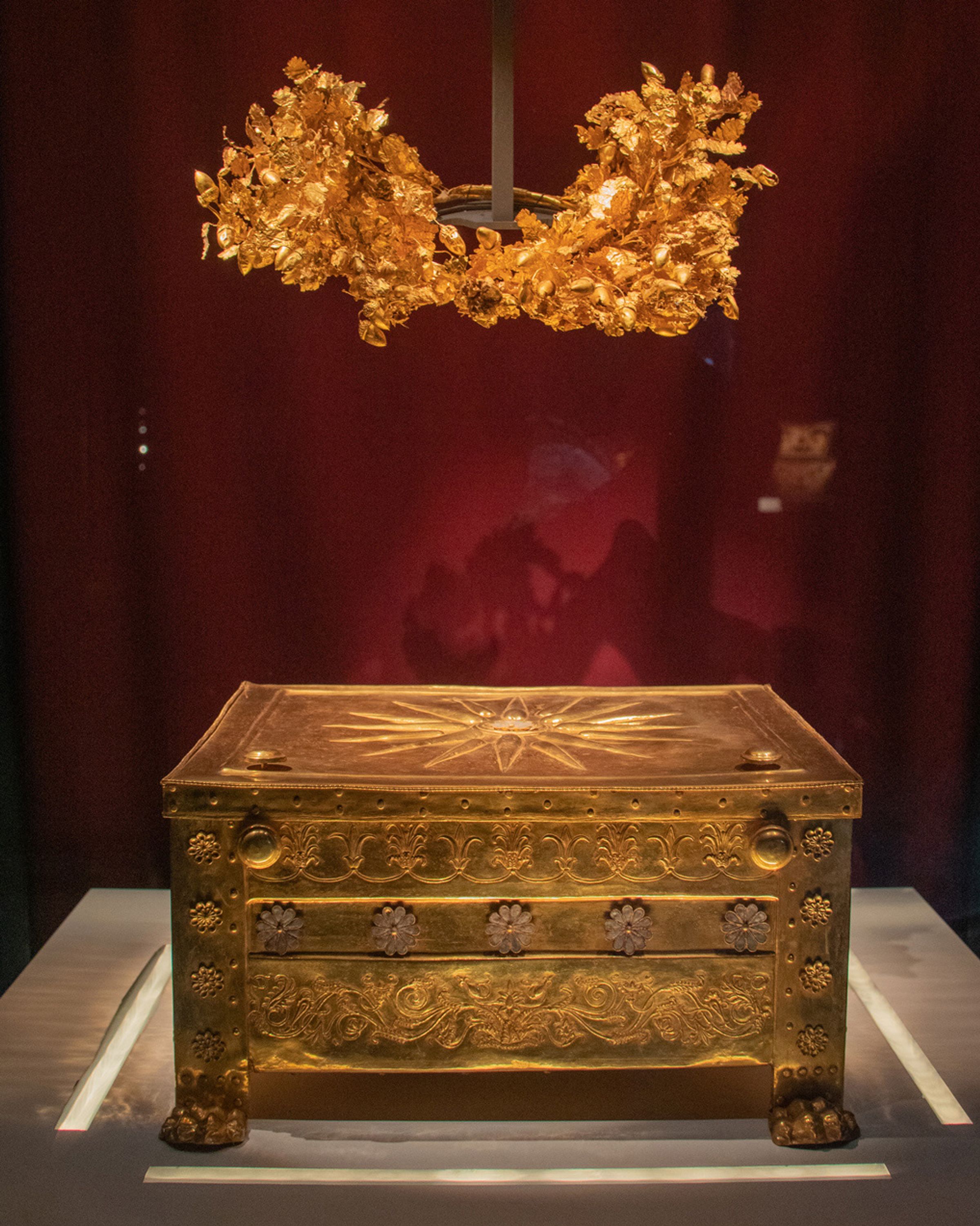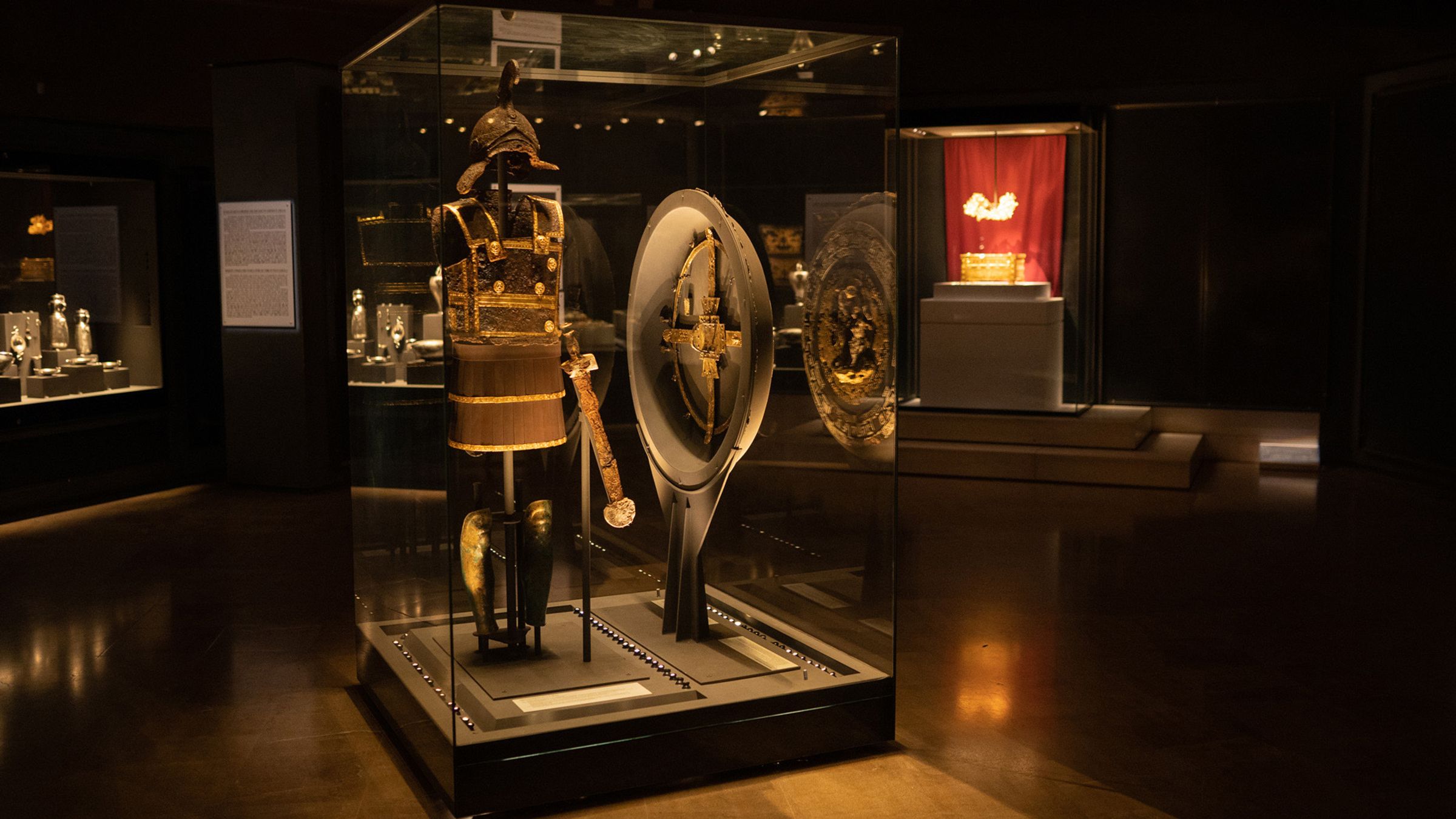
The Royal Tombs of Aigai
The Royal Tombs of Aigai
One of the most important discoveries in the history of archaeology
On November 8, 1977, the archaeologist Manolis Andronikos and his team brought to light one of the most important discoveries in the history of archaeology: the unlooted tomb of Philip II, king of the Macedonians and father of Alexander the Great, which had remained sealed for 23 centuries—since his burial in 336 BC at ancient Aigai.
Philip II’s tomb is a magnificent Macedonian tomb consisting of two chambers, with a façade resembling that of a temple. The marble entrance is framed by two half-columns and crowned with two friezes: one Doric with triglyphs and metopes, and one Ionic. On the Ionic frieze stands out an exceptional wall painting depicting a royal hunt, showing Philip II, Alexander, and the royal companions hunting lions, boars, and other animals in a sacred Macedonian forest.
At the back of the chamber, a marble sarcophagus was found, which housed a golden larnax (chest) decorated with the embossed sixteen-rayed sun—symbol of the ancient Macedonians. Inside were the cremated remains of Philip II and an impressive gold wreath weighing 714 grams, made up of 313 oak leaves and 68 acorns. Placed above the sarcophagus was an ivory-and-gold funerary bed (kline), beside which were discovered the king’s iron helmet, royal diadem, sword, and cuirass. In the southwest corner of the chamber, greaves (shin guards), iron spears, and an ivory-and-gold shield were found, along with bronze bathing vessels. On the other side of the bed were silver vessels intended for use in the symposium.
In the antechamber of the tomb, a second marble sarcophagus contained a golden larnax with the cremated remains of a young woman, wrapped in a richly embroidered gold-threaded fabric. The deceased was buried with a golden diadem, a myrtle gold wreath, an ivory-and-gold bed, and alabaster perfume containers.
“Based on strong archaeological evidence, I believe I have the right to attribute this tomb to Philip II... As for the woman buried in the antechamber, I still consider my original hypothesis plausible—that she may be Philip II’s last wife, Cleopatra—though I do not rule out N.G.L. Hammond’s suggestion that she might be one of his ‘barbarian’ wives (such as Meda), who, according to their custom, followed their husband into the tomb or were sacrificed upon it.”
(M. Andronikos, Vergina 1984, pp. 237/231)
In close proximity, the remarkably well-preserved tomb of the young Alexander IV—son of Alexander the Great and Roxana (310 BC)—was discovered.
At the Great Tumulus (Megali Toumba), a looted cist grave from the 4th century BC was also found, featuring impressive wall paintings. Its central theme depicted the "Abduction of Persephone" by Pluto. Nearby, the foundations of an above-ground monument were uncovered, which functioned as a Heroon—a shrine for worshipping the dead or heroes. This connection with the adjacent tombs indicates that the individuals buried there were not ordinary mortals, but people who were honored and venerated.


